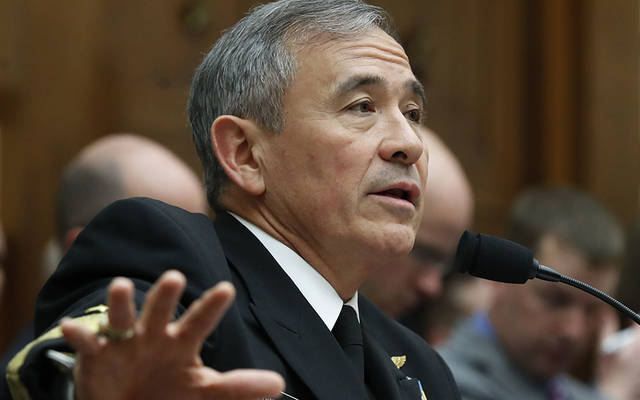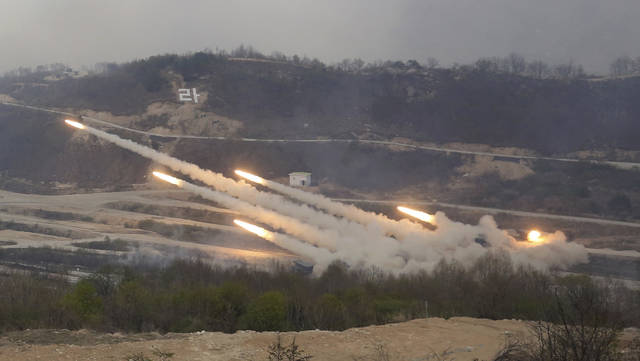Missile defense for Hawaii needs to be stronger, Harris tells Congress

ASSOCIATED PRESS
U.S. Pacific Command Commander Adm. Harry Harris Jr. testified on Capitol in Washington, today, before a House Armed Services Committee hearing on North Korea.

ASSOCIATED PRESS
South Korean army’s multiple launch rocket systems fired rockets during South Korea-U.S. joint military live-fire drills at Seungjin Fire Training Field in Pocheon, South Korea, near the border with North Korea, Wednesday.


The head of U.S. Pacific Command told Congress today that North Korean leader Kim Jong Un “is clearly in a position to threaten Hawaii today,” adding that a defensive radar for the islands is coming and installing intercontinental ballistic missile interceptors here is being discussed.
“I think that the defense of Hawaii radar is coming. I think the interceptors piece is something that is yet to be determined. But I believe we should certainly look at it,” Adm. Harry Harris said at a House Armed Services Committee hearing today in Washington.
Harris made some of the comments at the hearing in response to questions from U.S. Rep. Tulsi Gabbard, D-Hawaii, who said she just returned to Washington after holding a series of town hall meetings across the state.
The North Korean ICBM threat to Hawaii “was a constant question and theme that came up,” Gabbard said, asking Harris to characterize the threat level.
“I am concerned about it,” Harris said. “I believe that our ballistic missile (defense) architecture is sufficient to protect Hawaii today. But it can be overwhelmed.”
Hawaii is theoretically protected by ground-based interceptors in Alaska and California that would be launched to intercept North Korean ICBMs over the Pacific.
Don't miss out on what's happening!
Stay in touch with breaking news, as it happens, conveniently in your email inbox. It's FREE!
The decision would have to be made on “which ones to take out or not,” Harris said. He added that, “I think that we would be better served, my personal opinion is that we would be better served with a defensive Hawaii radar and interceptors in Hawaii. I know that is being discussed.”
The type of interceptors to potentially place in Hawaii “is the next level of detail,” Harris said.
With tensions in the Korean peninsula high, President Donald Trump today is holding an extraordinary White House briefing for senators on the situation. Also today, South Korea started installing key parts of a contentious U.S. defense system against missiles from North Korea.
Harris told Congress that any North Korean missile fired at U.S. forces would be destroyed. “If it flies, it will die,” he said.
South Korea’s trumpeting of progress in setting up the Terminal High-Altitude Area Defense system, or THAAD, comes as high-powered U.S. military vessels converge on the Korean Peninsula and as a combative North Korea signals possible nuclear and missile testing. Harris said the THAAD would be operational within days.
North Korea conducted live-fire artillery drills on Tuesday, the 85th anniversary of the founding of its million-person Korean People’s Army. On the same day, a U.S. guided-missile submarine docked in South Korea. The USS Carl Vinson aircraft supercarrier also is headed toward the peninsula for an exercise with South Korea. China, which is urging restraint on all sides, called for the U.S. to halt the maneuvers.
———
The Associated Press contributed to this report.





